The Effects of a Crosslinking Agent on the Microrheological Properties and Cellular Structure of Silicone Rubber Foam Prepared via a Green Process
Abstract
:1. Introduction
2. Experimental Procedure
2.1. Materials
2.2. Sample Preparation
2.3. Characterization
2.3.1. Cellular Structure
2.3.2. Crosslinking Density
2.3.3. Mechanical Properties
2.3.4. Compression Set
2.3.5. Thermogravimetric Analysis
2.3.6. Rheolaser Lab
2.4. Microrheological Theory
3. Results and Discussion
3.1. Effect of Crosslinking Agent on Cellular Structure of SRF
3.2. Effects of a Crosslinking Agent on the Mechanical Properties of SRF
3.3. Effect of a Crosslinking Agent on the Thermal Stability of SRF
3.4. Effect of a Crosslinking Agent on the Microrheological Properties of SRF
4. Conclusions
- (1)
- During the preparation of SRF, few cells grow on their own due to the hydrogen gas generated via the condensation reaction between components, resulting in the formation of cells. The main phenomenon that controls cell growth is cell coalescence.
- (2)
- With the increase in crosslinking agent content, the number of cells in SRF gradually increases, and coalescence occurs between cells. The porosity has an increasing trend. The crosslinking density of SRF increases, while the hardness, tensile strength, and elongation at break show decreasing trends.
- (3)
- By studying the microrheological properties of SRF, it is found that the viscoelasticity of SRF is best at a crosslinking agent content of 2%, the crosslinking and foaming reactions reach equilibrium, and they maintain a good balance. Therefore, its comprehensive performance is the best.
- (4)
- The entire reaction process and microrheological properties of SRF from the liquid to solid can be detected using Rheolaser Lab. To a certain extent, this can provide important data and support for the industrial production of SRF.
Author Contributions
Funding
Institutional Review Board Statement
Informed Consent Statement
Data Availability Statement
Conflicts of Interest
References
- Métivier, T.; Cassagnau, P. Foaming behavior of silicone/fluorosilicone blends. Polymer 2018, 146, 21–30. [Google Scholar] [CrossRef]
- Palash, M.; Moutusi, P.; Pabbati, V.; Ramanujam, S.; Stefan, K. Performance evaluation of room temperature vulcanized silicone rubber nanocomposites aged in strong aqueous solutions. Polym. Eng. Sci. 2022, 62, 1619–1630. [Google Scholar]
- Jia, Y.L.; Xiang, B.; Zhang, W.H.; Liu, T.; Luo, S.K. Microstructure and properties of microcellular silicone rubber foams with improved surface quality. Polym. J. 2019, 52, 207–216. [Google Scholar] [CrossRef]
- Miron, V.M.; Lämmermann, S.; Çakmak, U.; Major, Z. Material Characterization of 3D-printed Silicone Elastomers. Procedia Struct. Integr. 2021, 34, 65–70. [Google Scholar] [CrossRef]
- Vinodhini, J.; Sudheendra, K.; Bhowmik, S.; Srikrishnan, A.R.; Trivedi, P.D.; Zaveri, J.C.; Kundu, A. Novel thermally insulated ultra-lightweight fireproof and high impact resistance advanced hybrid composite. Polym. Eng. Sci. 2022, 62, 3026–3036. [Google Scholar] [CrossRef]
- Calabrese, L.; Palamara, D.; Piperopoulos, E.; Mastronardo, E.; Milone, C.; Proverbio, E. Deviceful LiCl salt hydrate confinement into a macroporous silicone foam for low-temperature heat storage application. J. Sci. Adv. Mater. Devices 2022, 7, 100463. [Google Scholar] [CrossRef]
- Manikkavel, A.; Kumar, V.; Kim, J.; Lee, D.J.; Park, S.S. Investigation of high temperature vulcanized and room temperature vulcanized silicone rubber based on flexible piezo-electric energy harvesting applications with multi-walled carbon nanotube reinforced composites. Polym. Compos. 2021, 43, 1305–1318. [Google Scholar] [CrossRef]
- Verma, A.R.; Reddy, B.S. Tracking and erosion resistance of LSR and HTV silicone rubber samples under acid rain conditions. IEEE Trans. Dielectr. Electr. Insul. 2018, 25, 46–52. [Google Scholar] [CrossRef]
- Labouriau, A.; Robison, T.; Meincke, L.; Wrobleski, D.; Taylor, D.; Gill, J. Aging mechanisms in RTV polysiloxane foams. Polym. Degrad. Stab. 2015, 121, 60–68. [Google Scholar] [CrossRef]
- Svenja, M.; Annette, R.; Michael, H.; Kevin, K.; Ralf-Urs, G.; Hans-Peter, H. Liquid Silicone Rubber Foams Made with Water as Blowing Agent. Adv. Eng. Mater. 2021, 24, 2100382. [Google Scholar]
- Xiang, B.; Deng, Z.P.; Zhang, F.S.; Wen, N.; Lei, Y.J.; Liu, T.; Luo, S.K. Microcellular silicone rubber foams: The influence of reinforcing agent on cellular morphology and nucleation. Polym. Eng. Sci. 2019, 59, 5–14. [Google Scholar] [CrossRef]
- Kumar, A.; Mollah, A.A.; Keshri, A.K.; Kumar, M.; Singh, K.; Rallabhandi, K.D.V.S.; Seelaboyina, R. Development of macroporous silicone rubber for acoustic applications. Ind. Eng. Chem. Res. 2016, 55, 8751–8760. [Google Scholar] [CrossRef]
- Li She, Y.F.; Zang, C.G.; Zhang, Y.L. Effect of the structure of hydrogen-containing silicone oil on the properties of silicone rubber. Mater. Chem. Phys. 2020, 248, 122734. [Google Scholar]
- He, C.; Li, B.Q.; Ren, Y.; Wu, L.; Zeng, Y.B.; He, W.D.; Feng, A.C. How the crosslinking agent influences the thermal stability of RTV phenyl silicone rubber. Materials 2019, 12, 88. [Google Scholar] [CrossRef] [PubMed]
- Wang, Q.Q.; Xu, P.W.; Yang, W.J.; Liu, T.X.; Hoch, M.; Ma, P.M. A green cross-link strategy to rubber composites using water as a crosslinking agent. Compos. Sci. Technol. 2022, 221, 109339. [Google Scholar] [CrossRef]
- Jiang, Y.; Zhang, Y. Improving thermal oxidative aging resistance and anti-reversion property of natural rubber by adding a crosslinking agent. J. Appl. Polym. Sci. 2021, 139, 51882. [Google Scholar] [CrossRef]
- Geonzon, L.C.; Kobayashi, M.; Tassieri, M.; Bacabac, R.G.; Adachi, Y.; Matsukawa, S. Microrheological properties and local structure of ι-carrageenan gels probed by using optical tweezers. Food Hydrocoll. 2023, 137, 108325. [Google Scholar] [CrossRef]
- Li, G.D.; Fang, B.; Lu, Y.J.; Li, K.J.; Ma, M.; Qiu, X.H.; Wang, L.W.; Liu, Y.T.; Yang, M.; Huang, C.H. Intrinsic crosslinking and gel-breaking rheo-kinetics of CMHEC/CTAB Systems. J. Dispers. Sci. Technol. 2016, 37, 1638–1644. [Google Scholar] [CrossRef]
- Ramezani, M.; Ferrentino, G.; Morozova, K.; Scampicchio, M. Multiple light scattering measurements for online monitoring of milk fermentation. Foods 2021, 10, 1582. [Google Scholar] [CrossRef]
- Tisserand, C.; Fleury, M.; Brunel, L.; Bru, P.; Meunier, G. Passive microrheology for measurement of the moncentrated dispersions stability. Prog. Colloid Polym. Sci. 2012, 139, 101–105. [Google Scholar]
- Zhang, Y.R.; Kong, X.M.; Gao, L.; Lu, Z.C.; Zhou, S.M.; Dong, B.Q.; Xing, F. In-Situ measurement of viscoelastic properties of fresh cement paste by a microrheology analyzer. Cem. Concr. Res. 2016, 79, 291–300. [Google Scholar] [CrossRef]
- A’yun, Q.; Coghe, K.; Rebry, F.; Hidayat, C.; Van der Meeren, P. Probing the improved heat stabilizing capacity of dry heat conjugated whey protein in oil-in-water emulsions: A microrheological study. Food Hydrocoll. 2023, 140, 108619. [Google Scholar] [CrossRef]
- Tang, W.Y.; Liao, X.; Zhang, Y.; Li, S.J.; Wang, G.; Yang, J.M.; Li, G.X. Cellular structure design by controlling rheological property of silicone rubber in supercritical CO2. J. Supercrit. Fluids 2020, 164, 10493. [Google Scholar] [CrossRef]
- Tang, W.Y.; Liao, X.; Zhang, Y.; Li, J.S.; Wang, G.; Li, G.X. Mechanical-microstructure relationship and cellular failure mechanism of silicone rubber foam by the cell microstructure designed in supercritical CO2. J. Phys. Chem. C 2019, 123, 26947–26956. [Google Scholar] [CrossRef]
- HG/T 2875-1997; Test Method for Characteristic Values of Crosslinking Density of Rubber-Plastic Microporous Materials. Rubber Shoes Research Institute: Shanghai, China, 1997.
- Palmero-Cruz, N.C.; Hernández-Hernández, S.M.; Castillo, R.; Sarmiento-Gómez, E. Distribution of cage size smooths the transition from diffusive to caging in microrheology. Mol. Phys. 2023, e2274505. [Google Scholar] [CrossRef]
- Chen, Y.Q.; Chou, P.L.; Cheng, C.Y.; Chiang, C.C.; Wei, M.T.; Chuang, C.T.; Chen, Y.L.S.; Chiou, A. Microrheology of human synovial fluid of arthritis patients studied by diffusing wave spectroscopy. J. Biophotonics 2012, 5, 777–784. [Google Scholar] [CrossRef]
- Zheng, B.L. The Application Research of Rotation Rheometer and Microrheomter; Beijing University of Chemical Technology: Beijing, China, 2014; pp. 13–18. [Google Scholar]
- Valentine, M.T.; Kaplan, P.D.; Thota, D.; Crocker, J.C.; Gisler, T.; Prud’homme, R.K.; Beck, M.; Weitz, D.A. Investigating themicroenvironments of inhomogeneous soft materials with multiple particle tracking. Phys. Rev. E Stat. Nonlinear Soft Matter Phys. 2001, 64, 061506. [Google Scholar] [CrossRef]
- Tammaro, D.; Di Maio, E. Early bubble coalescence in thermoplastic foaming. Mater. Lett. 2018, 228, 459–462. [Google Scholar] [CrossRef]
- Jawhar, M.C.D.; Blanc, D.; Chaumont, P.; Cassagnau, P. Study of the coalescence mechanisms during silicone foaming. Macromol. Mater. Eng. 2014, 299, 336–343. [Google Scholar] [CrossRef]
- Wang, B.Q.; Peng, Z.L.; Zhang, Y.; Zhang, Y.X. Study on foaming kinetics and preparation of EPDM foams. Plast. Rubber Compos. 2006, 35, 360–367. [Google Scholar] [CrossRef]
- Chruściel, J.J.; Leśniak, E. Preparation of Flexible, Self-Extinguishing Silicone Foams. J. Appl. Polym. Sci. 2011, 119, 1696–1703. [Google Scholar] [CrossRef]
- Camino, G.; Lomakin, S.M.; Lageard, M. Thermal polydimethylsiloxane degradation. Part 2. the degradation mechanisms. Polymer 2002, 43, 2011–2015. [Google Scholar] [CrossRef]
- Lou, W.T.; Xie, C.Y.; Guan, X.F. Thermal-aging constitutive model for a silicone rubber foam under compression. Degrad. Stab. 2022, 198, 109873. [Google Scholar] [CrossRef]
- Zhang, B.; Li, R.; Luo, J.; Chen, Y.; Zou, H.; Liang, M. Epoxy-silicone copolymer synthesis via efficient hydrosilylation reaction catalyzed by high-activity platinum and its effect on structure and performance of silicone rubber coatings. Polym. Bull. 2017, 75, 2105–2124. [Google Scholar] [CrossRef]
- Liu, Y.F.; Shi, Y.H.; Zhang, D.; Li, J.L.; Huang, G.S. Preparation and thermal degradation behavior of room temperature vulcanized silicone rubber-g-polyhedral oligomeric silsesquioxanes. Polymer 2013, 54, 6140–6149. [Google Scholar] [CrossRef]
- Wang, X.; Li, X.; Xu, D.X.; Zhu, Y.C.; Cao, Y.P.; Li, X.T.; Sun, B.G. Modulation of stability, rheological properties, and microstructure of heteroaggregated emulsion: Influence of oil content. LWT Food Sci. Technol. 2019, 109, 457–466. [Google Scholar] [CrossRef]
- Saikia, T.; Sultan, A.; Al Hamad, J.S. Effect of mixing method on the rheokinetics of pickering emulsified gel system used as disproportionate permeability reducer. Rheol. Acta 2020, 59, 875–885. [Google Scholar] [CrossRef]
- Weißer, D.F.; Shakeel, A.; Mayer, D.; Schmid, J.; Heienbrock, S.J.; Deckert, M.H.; Rapp, B.E. Gel point investigation of liquid silicone rubber using rheological approaches. Polymer 2023, 283, 126286. [Google Scholar] [CrossRef]
- Abdala, A.A.; Amin, S.; Van-Zanten, J.H.; Khan, S.A. Tracer microrheology study of a hydrophobically modified comb like associative polymer. Langmuir 2015, 31, 3944–3951. [Google Scholar] [CrossRef]
- Nishizawa, K.; Honda, N.; Inokuchi, S.; Ebata, H.; Ariga, T.; Mizuno, D. Measuring fluctuating dynamics of sparsely crosslinked actin gels with dual-feedback nonlinear microrheology. Phys. Rev. E 2023, 108, 034601. [Google Scholar] [CrossRef]
- Nofar, M.; Park, C.B. Poly (lactic acid) foaming. Prog. Polym. Sci. 2014, 39, 1721–1741. [Google Scholar] [CrossRef]
- Marl, S.; Giesen, R.U.; Heim, H.P. Liquid Silicone Rubber Foamed with Thermoplastic Expandable Microspheres. Materials 2022, 15, 3779. [Google Scholar] [CrossRef]


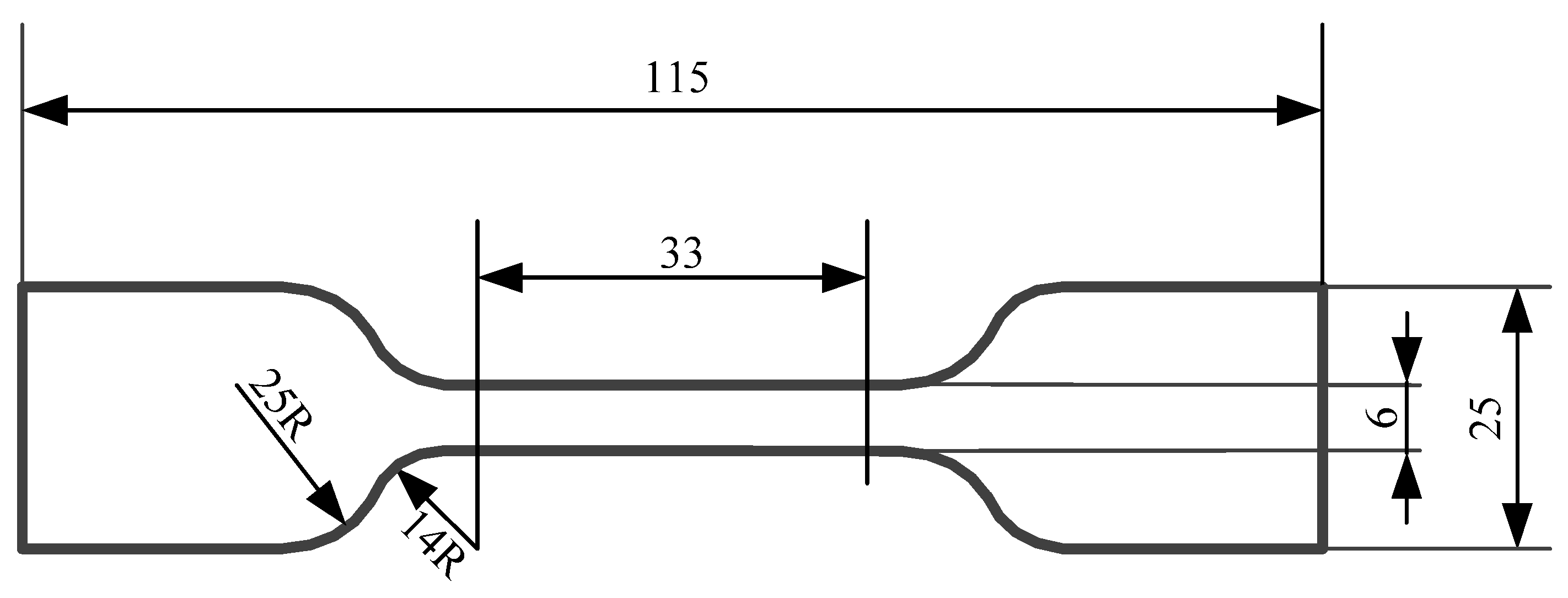

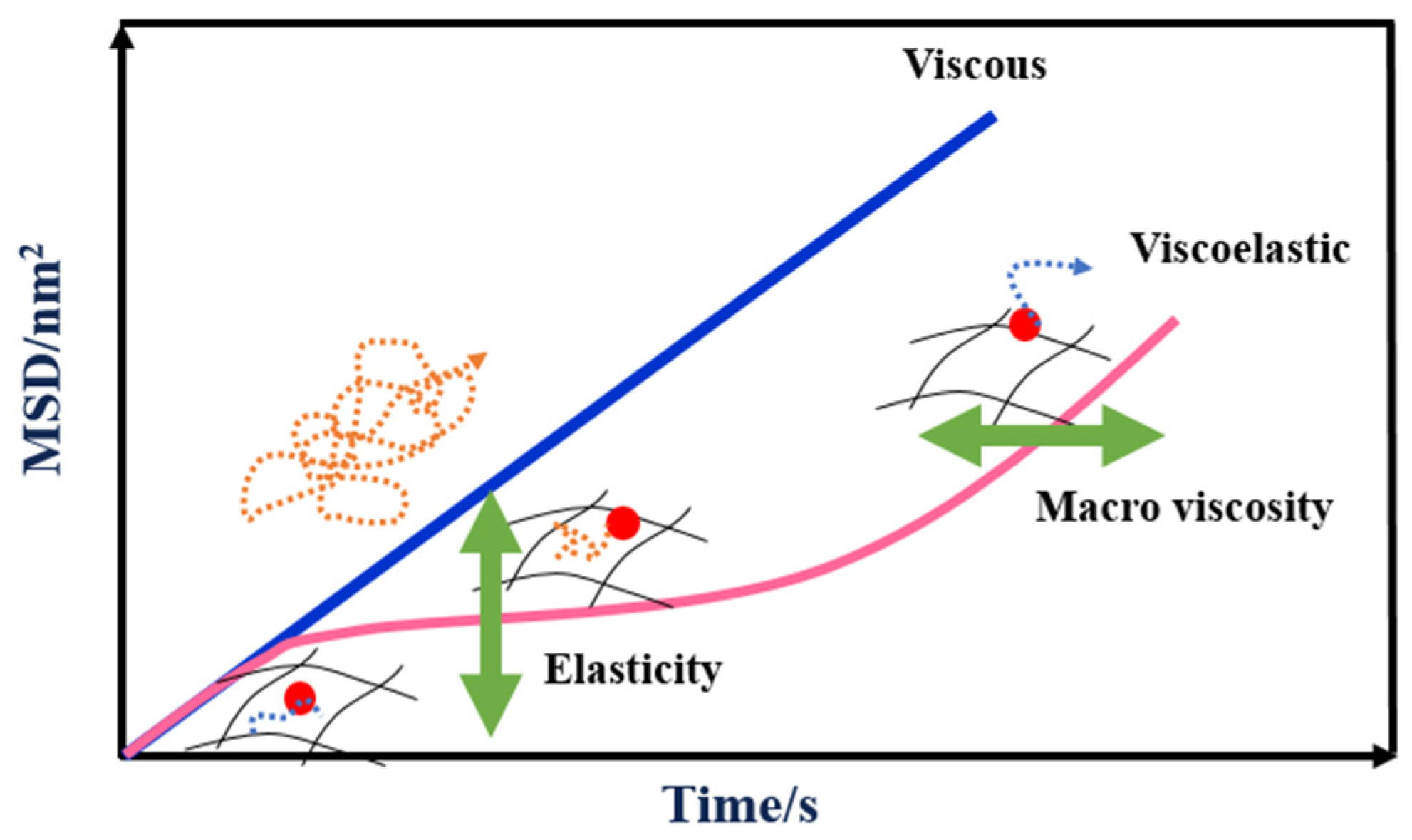
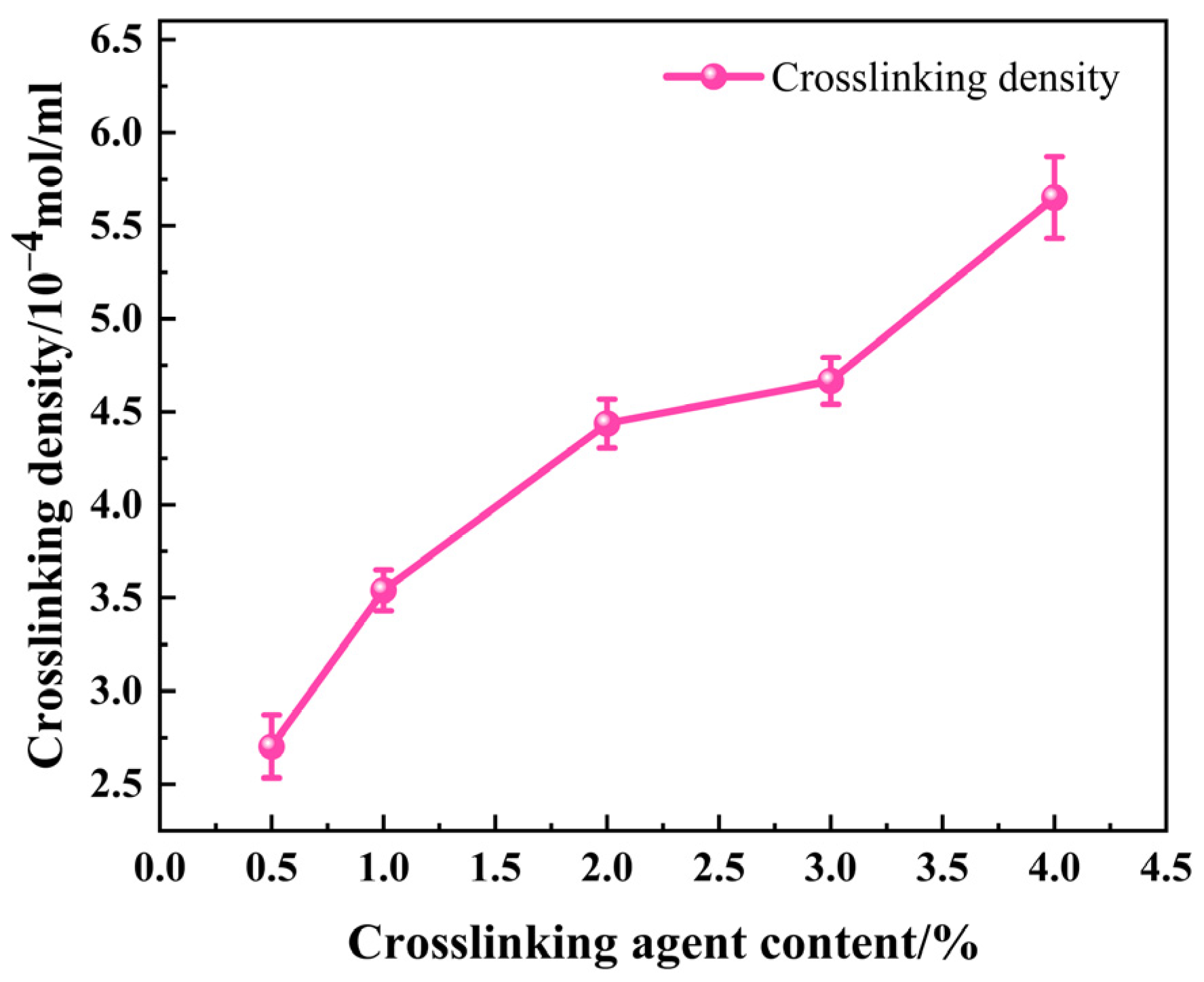
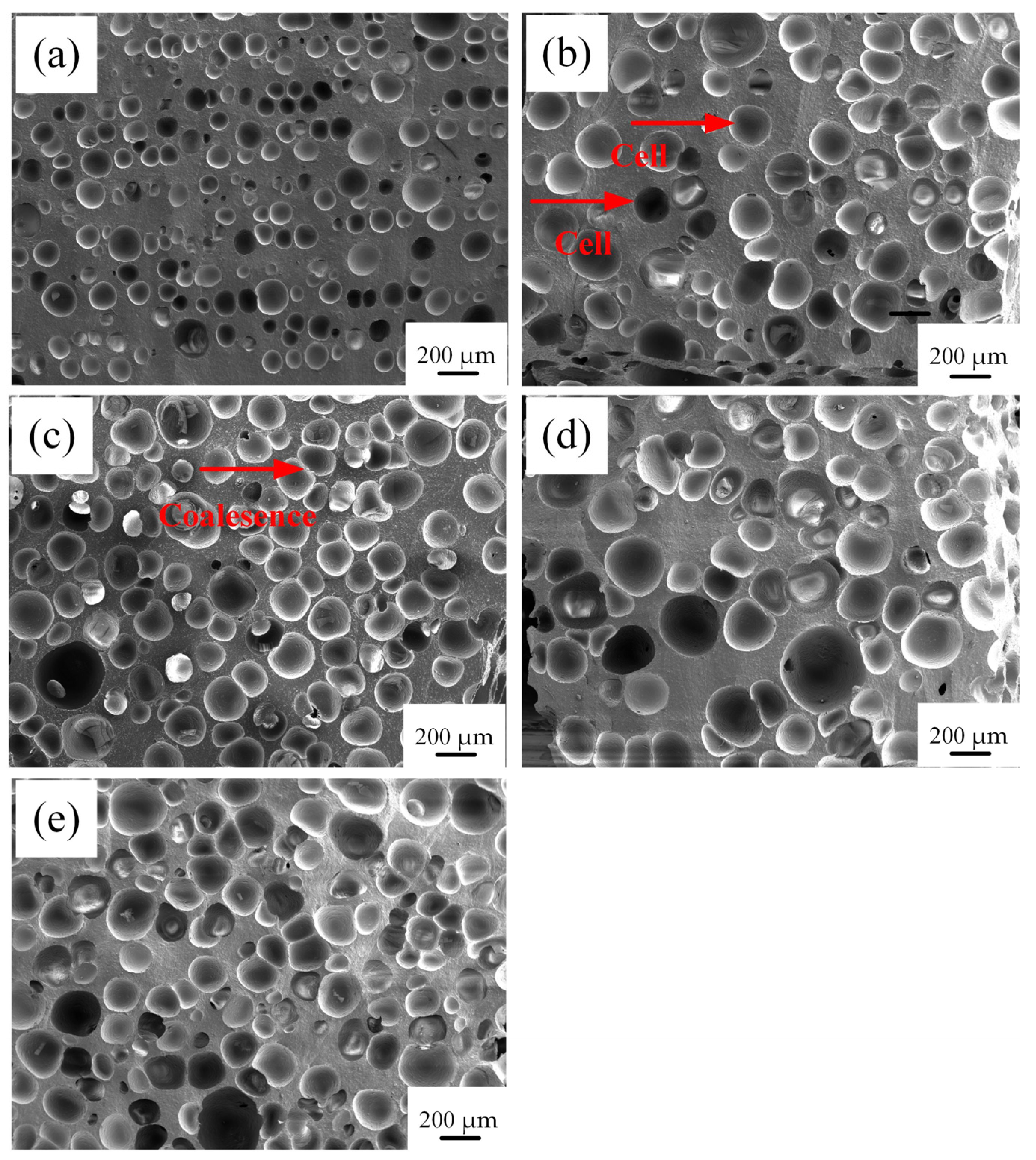
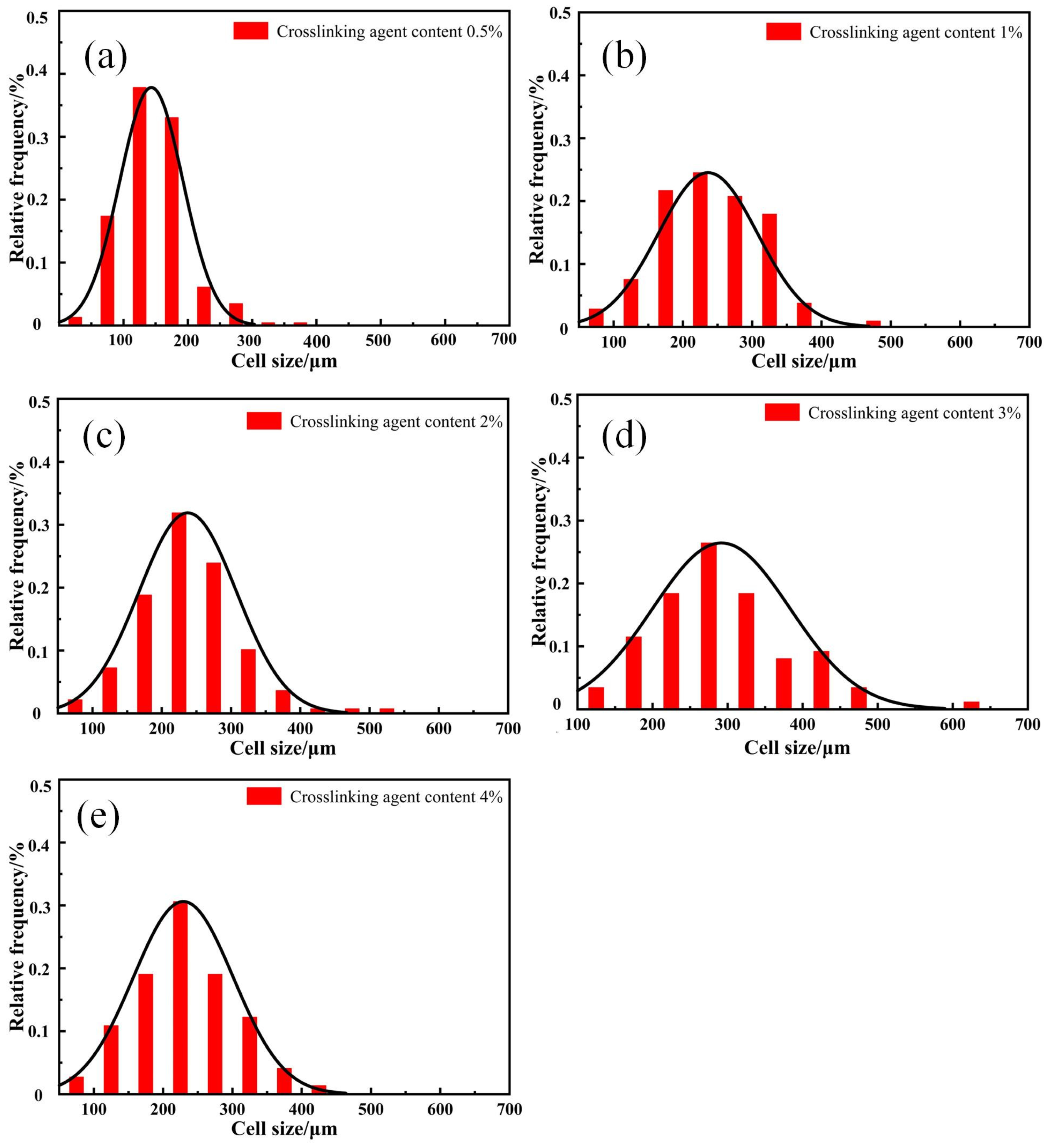
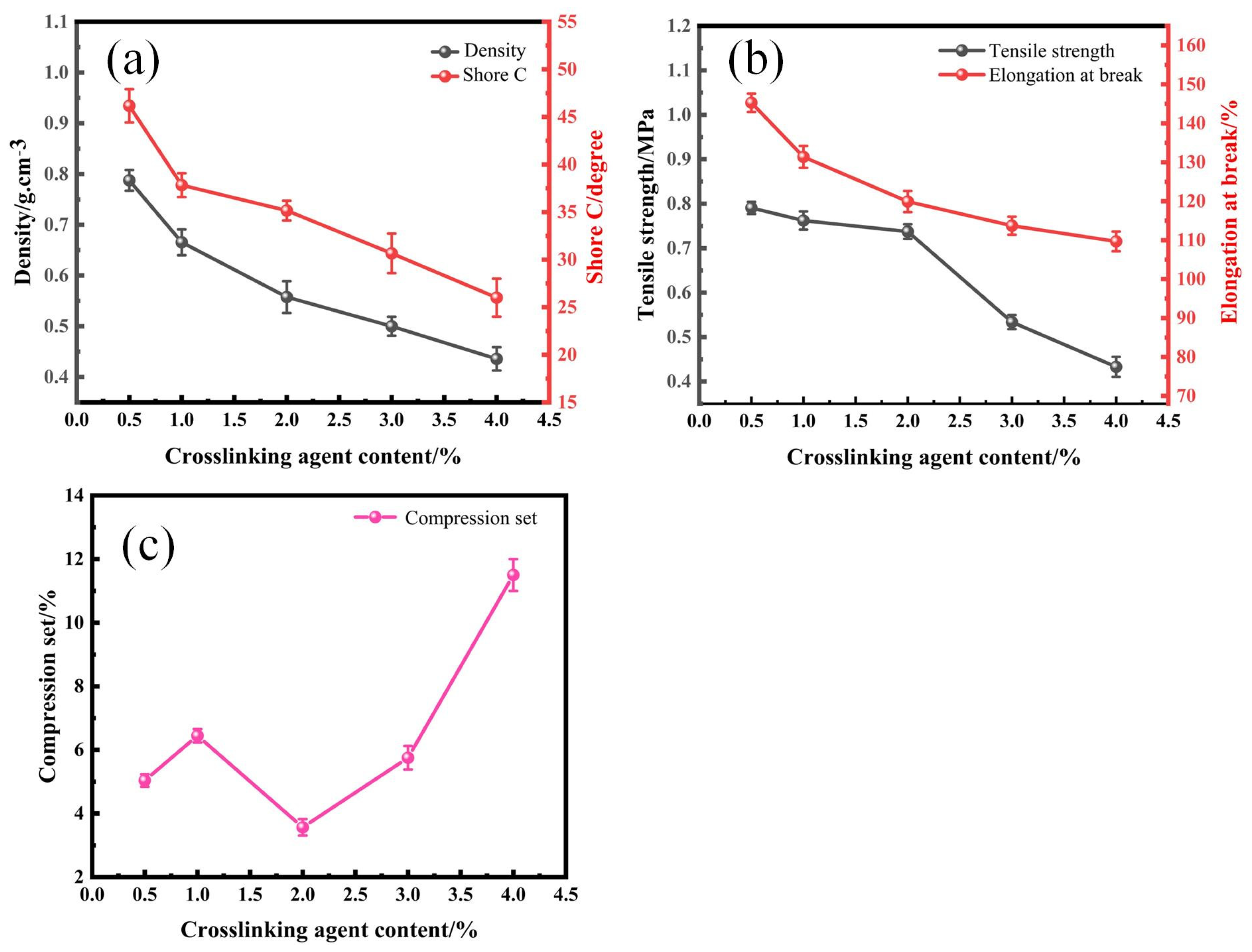


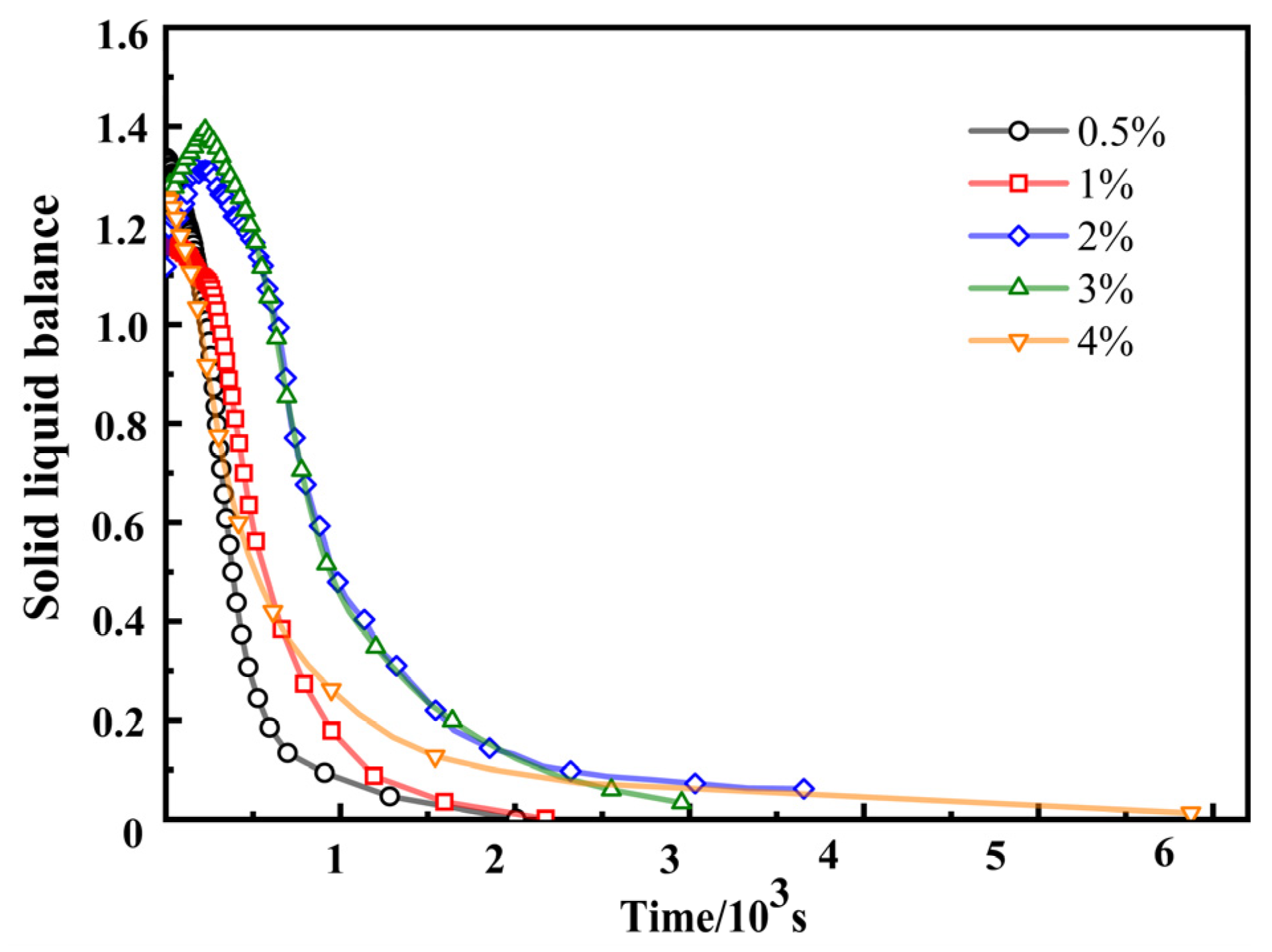

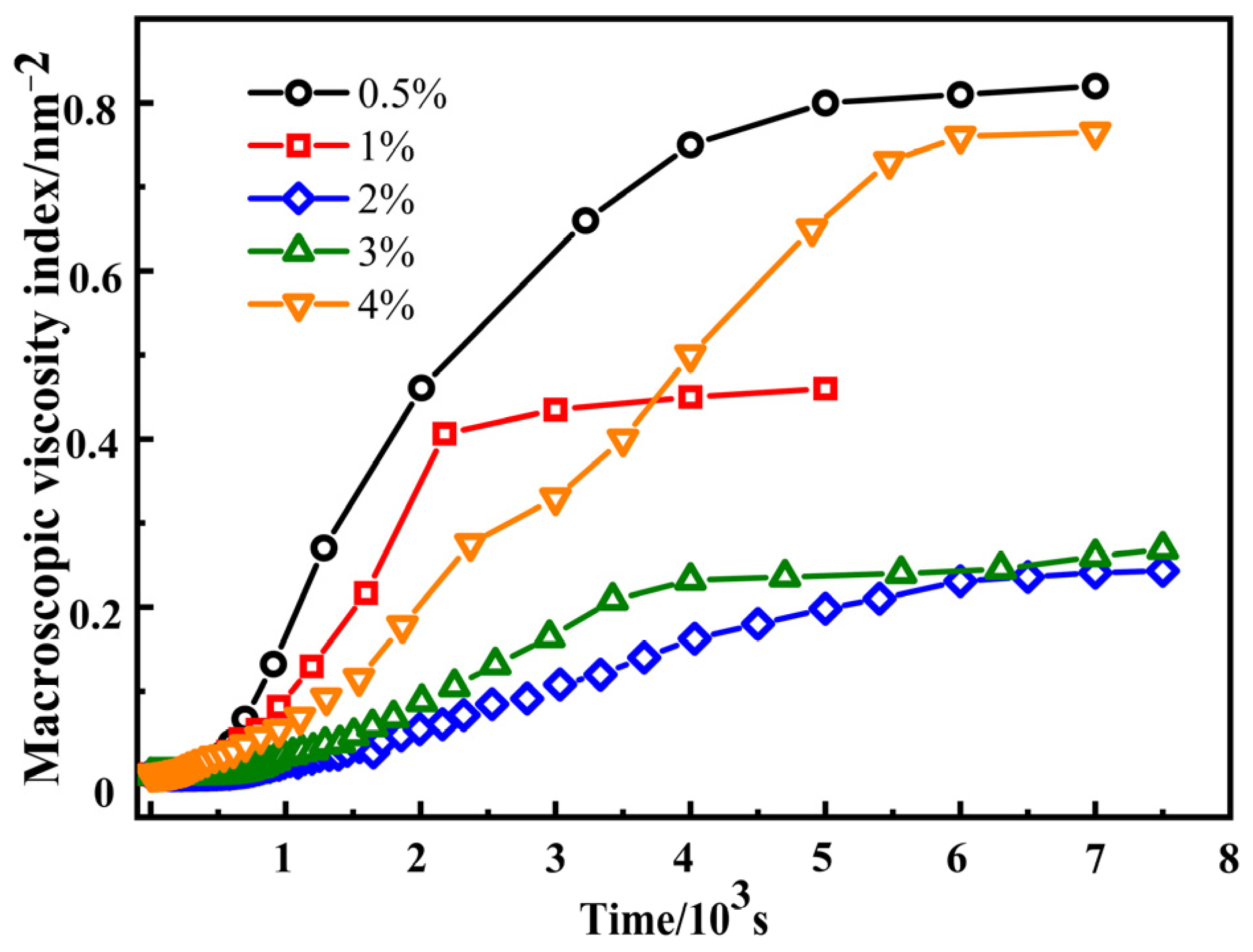
| Component | Materials | Viscosity/Pa·s | Mass Fraction/% |
|---|---|---|---|
| A | Vinyl-terminated silicone oil | 10 | 25 |
| Vinyl-terminated MQ silicone resin | 100 | 24 | |
| Hydroxyl-terminated silicone oil | 0.02 | 0.5 | |
| Catalyst | −1 | 0.5 | |
| B | Vinyl-terminated silicone oil | 10 | 25 |
| Vinyl-terminated MQ silicone resin | 100 | 23.95 | |
| Hydrogen-containing silicone oil | 0.02 | 0.5, 1, 2, 3, 4 | |
| Inhibitor | 0.1 | 0.05 |
| Cellular Structures | a | b | c | d | e |
|---|---|---|---|---|---|
| Cell average size (μm) | 143 | 236 | 237 | 291 | 229 |
| Cell density (cells/cm3) | 5.41 × 109 | 1.69 × 109 | 2.29 × 109 | 1.26 × 109 | 3.03 × 109 |
| Foaming density (g/cm3) | 0.765 | 0.637 | 0.567 | 0.494 | 0.437 |
| Porosity (%) | 47 | 56 | 61 | 66 | 70 |
| Crosslinking Agent (%) | 0.5 | 1 | 2 | 3 | 4 |
|---|---|---|---|---|---|
| EI (nm−2) | 0.56 | 0.66 | 0.83 | 0.74 | 0.77 |
| Crosslinking Agent (%) | 0.5 | 1 | 2 | 3 | 4 |
|---|---|---|---|---|---|
| MVI (nm−2) | 0.82 | 0.45 | 0.24 | 0.27 | 0.77 |
Disclaimer/Publisher’s Note: The statements, opinions and data contained in all publications are solely those of the individual author(s) and contributor(s) and not of MDPI and/or the editor(s). MDPI and/or the editor(s) disclaim responsibility for any injury to people or property resulting from any ideas, methods, instructions or products referred to in the content. |
© 2024 by the authors. Licensee MDPI, Basel, Switzerland. This article is an open access article distributed under the terms and conditions of the Creative Commons Attribution (CC BY) license (https://creativecommons.org/licenses/by/4.0/).
Share and Cite
He, H.; Li, L.; Liu, H.; Luo, B.; Li, Z.; Tian, W. The Effects of a Crosslinking Agent on the Microrheological Properties and Cellular Structure of Silicone Rubber Foam Prepared via a Green Process. Materials 2024, 17, 707. https://doi.org/10.3390/ma17030707
He H, Li L, Liu H, Luo B, Li Z, Tian W. The Effects of a Crosslinking Agent on the Microrheological Properties and Cellular Structure of Silicone Rubber Foam Prepared via a Green Process. Materials. 2024; 17(3):707. https://doi.org/10.3390/ma17030707
Chicago/Turabian StyleHe, Hongyu, Lulu Li, Hong Liu, Bin Luo, Zhipeng Li, and Wenhuai Tian. 2024. "The Effects of a Crosslinking Agent on the Microrheological Properties and Cellular Structure of Silicone Rubber Foam Prepared via a Green Process" Materials 17, no. 3: 707. https://doi.org/10.3390/ma17030707





